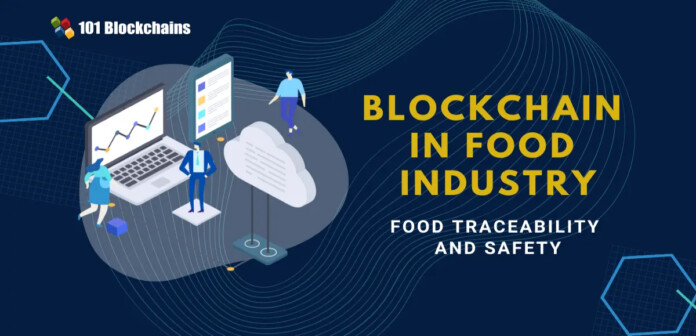‘Supply chain visibility’ is about how to transform the way businesses operate. Rapid developments influence this in three key areas: regulatory compliance, consumer preferences and digital technologies and solutions. In this article, I will focus on the food and beverage sector.
Regulatory Compliance: Although most countries have laws governing safety and sustainability standards in the F&B Industry, recent regulations such as the European Union Deforestation Regulation (EUDR) are even more stringent. Besides, companies in the F&B sector have made ESG-related commitments towards the reduction of carbon intensity to ensure supply chains are free from child and forced labour and enable farmers to earn a ‘living income’. Supply chain traceability and visibility are the cornerstones of delivering on these sustainability commitments credibly.
What’s Working Well for Planet, Growers, and Business: The consumers of today are increasingly conscious about where their food comes from and whether it has been sustainably produced. A recent study shows that the ‘say-do’ gap is reducing, and consumers are speaking loudly with their wallets: 72% of consumers report buying more eco-friendly products than five years ago, with 55% willing to pay a premium for sustainable brands. This growing consciousness is reflected in a 71% increase in global online searches for sustainable goods over the past five years, while sustainable products are growing 2.7 times faster than their conventional counterparts.
Meeting these expectations requires leveraging innovative technological solutions that enable complete transparency across the supply chain, which will drive both business performance and a culture of sustainable agriculture.
Harnessing the Power of Technology: A range of modern technologies that can enhance operational control, track processes from start to finish, and promote better sustainable practices are powering supply chain visibility across organisations. Implementing these solutions not only empowers the customer with transparency but also improves resource management and environmental stewardship for all involved in the supply chain. But how exactly are these shaping the agricultural landscape?
Some of the key technologies driving this transformation include:
- IoT and Sensor Technology: Monitor soil, crops, and nutrients in real time to plan out farming practices and reduce waste
- Satellite and Drone Imagery: Provide detailed visual field data for precise agricultural decisions and support climate-smart agriculture
- Blockchain: Provides a reliable and immutable record of product journeys from start to finish
- Digital Marketplaces: Mobile apps enabling companies to reach, engage and transact with farmers directly, reducing the need for middlemen
- Digital twin: A digital virtual twin of the supply chain for near-real-time actions for greater supply chain efficiency
The combination of all these technologies creates a more transparent and efficient food system. The result is not only improved consumer trust but also a more resilient supply chain that can easily adapt to any kind of challenges in the future.
Enhancing Productivity and Sustainability Through Data
Data-driven agriculture has taken centre stage in improving supply chain visibility. Sensor technologies deployed at the farm level allow farmers to make data-backed decisions. For example, sensors can help farmers direct water precisely where needed in their farms instead of watering entire fields thereby conserving resources. Advanced sensors capture data on soil biodiversity which can be used for optimizing nutritional inputs, helping farmers improve yields at reduced cost.
Similarly, drones and satellite imaging provide detailed insights into crop conditions in real-time. By identifying early signs of pest infestations or nutrient deficiencies, farmers can address issues swiftly and avoid potential losses. Precision agriculture ensures maximum productivity with minimal environmental impact, making farming more efficient and eco-friendlier.
Technologies like Blockchain can help companies back up their sustainability claims in a way that consumers can trust. Sustainability-related data – such as farm location, the methods used in growing crops, and the sustainability practices followed throughout the process – is collected and stored in an immutable digital ledger. This data can be presented to consumers via QR codes on packaging. This enables businesses to not only meet regulatory standards but also foster consumer loyalty through verified sustainability claims.
Empowering Smallholder Farmers and Driving Fair Commerce
Direct engagement platforms and digital marketplaces are revolutionising the way agricultural products are marketed and sold today. Smallholder farmers, who previously struggled to access larger markets, now can reach global buyers through these platforms. The elimination of the middleman ensures farmers receive better prices for their produce, while consumers benefit from fresh, authentic products.
Balancing Business Efficiency with Environmental Impact
Modern agriculture is increasingly focused on balancing profitability with environmental responsibility. Best-in-class monitoring systems can now track more than150 sustainable parameters, including water usage, carbon footprint, and energy consumption. The data provides enough insights for companies to assess their environmental impact and take corrective actions where needed.
Some commodities have longer complex supply chains which can span multiple countries. By implementing a suite of connected digital solutions across the supply chain and using advanced data modelling, companies are building digital virtual twins. These models can be used for scenario analysis and responding much faster to supply chain disruptions.
The Road Ahead – Shaping a Sustainable Future for Agriculture
Environmental pressures and increasingly stringent regulations are driving the need for more robust monitoring of farming practices. The future of the food and beverage industry now hinges on technology-driven traceability and sustainable optimisation. Moving forward, these mentioned technologies remain to be the key shapers to progressive practices in sustainable agriculture. When such innovation is applied and implemented strategically, the industry can deal with its major challenges including resource saving, climate change and food security, among others.
As the industry evolves and agritech advances, those who invest in visibility and sustainability today will emerge as leaders in the agricultural landscape of tomorrow.
Siddharth Satpute – Head of Digital Solutions & Senior Vice President, Mindsprint










